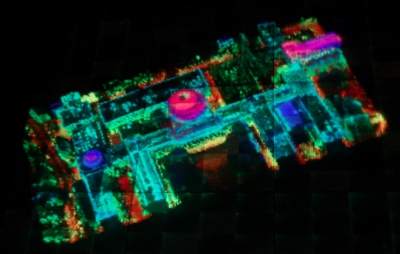The Defense Advanced Research Projects Agency (DARPA) and Zebra Imaging have designed a real-time, 360-degree 3D holographic display to assist battle planners.
Dubbed the Urban Photonic Sandtable Display (UPSD), the system allows up to 20 participants to view a large-format, interactive color 3D display without goggles or glasses.

According to DARPA, UPSD will assist team-based mission planning, visualization and interpretation of complex 3D data such as intelligence and medical imagery.
Images – including those depicting rugged, mountainous and complex urban terrain – can be frozen, rotated and zoomed up to the resolution limit of the data.
The holographic display is also capable of rendering full visual depth capability up to 12 inches, while enabling realistic two-dimensional printouts of the 3D imagery that front line troops can take with them on missions.
So, how does UPSD work?
Well, the system is based on full-parallax technology, which enables each 3D holographic object to project the correct amount of light that the original object possessed in each direction – thereby facilitating full 360-degree viewing.
Conventional 3D displays currently lack full-parallax and only provide viewing from certain angles – with typically only three to four inches of visual depth.
However, UPSD is a scalable display platform that can be expanded from a six-inch diagonal size up to a six-foot diagonal, in both monochrome and color formats.
It should be noted that UPSD is part of DARPA’s broader efforts in 3D technology research.
For example, the DoD recently demonstrated a wide-area 3D LIDAR (Light Detection and Ranging) mapping capability under DARPA’s High Altitude LIDAR Operations Experiment (HALOE).
HALOE – which is fully functional – provides forces in Afghanistan with unprecedented access to high-resolution 3D data, collected at rates orders of magnitude faster and from much longer ranges than conventional methods.






